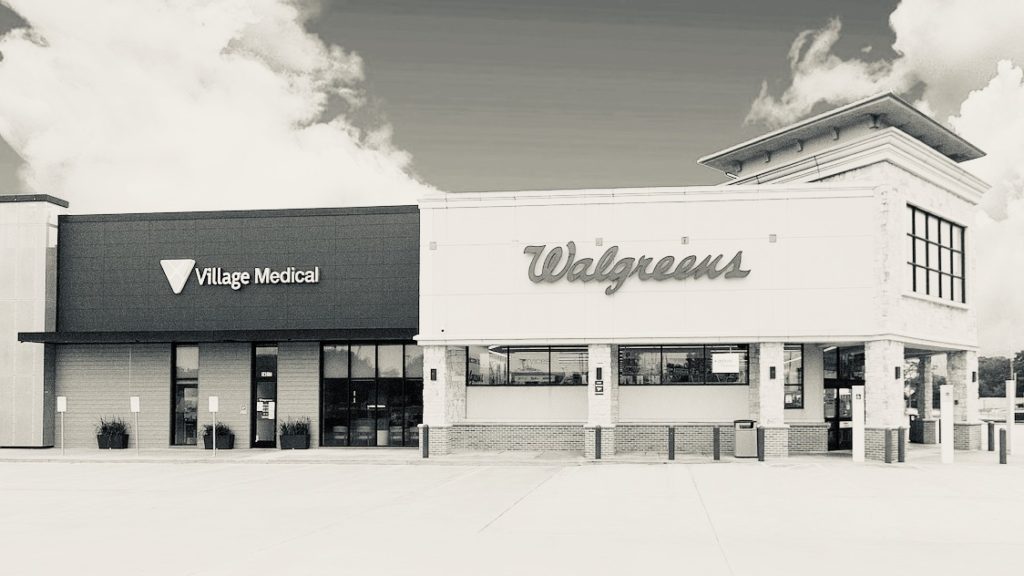
Walgreens and rival CVS Health Corp. are in a race to become go-to treatment centers, particularly for patients with costly, hard-to-manage chronic conditions. Both chains are seeking new ways to counter smaller revenue from prescription drugs, which drive the bulk of their sales. They also are battling online rivals such as Amazon.com that have drawn shoppers away from physical stores.
From retail clinic to retail medical home
I think it’s worth teasing out how this relationship is different from other retail clinic arrangements.
Retail health clinics are care delivery sites located in retail stores — examples are CVS Minute Clinics and Rite Aid RediClinics. Retail clinics classically deal with minor, isolated issues that need timely attention. Urgent care clinics typically offer a slightly higher level of acuity by offering services like x-ray and labs. Think emergency center lite. These are not hard line definitions.
The Walgreens villageMD relationship addresses the problem of fragmented medical care that I see every day. It goes something like this: A patient develops a sore throat in the evening after their doctor’s office is closed. So they go to a retail clinic and then follow-up two days later with their PCP where the results of the rapid strep test are not available. Different clinic, different nurse practitioner, different electronic health record. This experience of seeing a patient with no access to their recent history is not only frustrating but potentially risky. Despite its convenience, it’s one of the core criticisms of walk-in medical care.
What’s different here is that I see Walgreens VillageMD as a first iteration of the retail medical home.
There’s a difference between just going to see who’s open versus seeing your primary care provider at the pharmacy. The media and other analysts have categorized the Walgreens VillageMD arrangement as a retail clinic which is really the wrong way of framing the relationship. This is a clinic in a retail space but not a retail clinic in the modern healthcare market sense. The Walgreens VillageMD model gets closer to a medical home embedded in a retail setting. Walgreens is the first pharmacy chain to fully integrate an established primary care infrastructure under their roofs.
Think of a more accessible medical home. This will allow tighter continuity for the underserved population they aim to serve.
The ultimate power move would be to slay the boundaries of the legacy EHR systems so that I could see what was done at my home clinic at Texas Children’s Hospital | The Woodlands. But first things first.
VillageMD or VillageNP
While the partner organization in this deal carries ‘MD’ in their title it could easily be ‘PA’ or ‘NP.’ As suggested earlier this week in my breakdown of the AAMC physician demand projections, advanced practitioners are increasingly the human interface in primary care. This from JAMA:
What will be the future role of physician in these kinds of systems? Retail clinics have built their success on a progressive expansion of clinical scope of practice in primary care and in other specialty areas that extend beyond physician to include nurse practitioners, physician assistants and pharmacists. These developments reduce the need for physicians in some settings and in some aspects of team care. Much of chronic care management, especially with good real-time clinical data and analytics, telehealth capability and capable nurse/pharmacy/social work professionals does not require the presence or direct engagement of physicians. Artificial intelligence and machine learning may speed that trend, and a future as envisioned by the Aetna/CVS leaders could further reduce the need for physicians as a point of first contact, moving the physician to an analyst for difficult diagnosis, complex problems, and group leadership or management.
‘Much of chronic care management … does not require the presence or direct engagement of physicians.’ Let that sink in.
We’re reaching the point where receiving care at a doctor’s office or hospital almost seems quaint. And despite the superficial news of another clinic in a pharmacy, this deal is different.
If you like this post you might like the weekly 33charts newsletter. It’s a collection of the most interesting things in healthcare and technology curated and analyzed for your review.